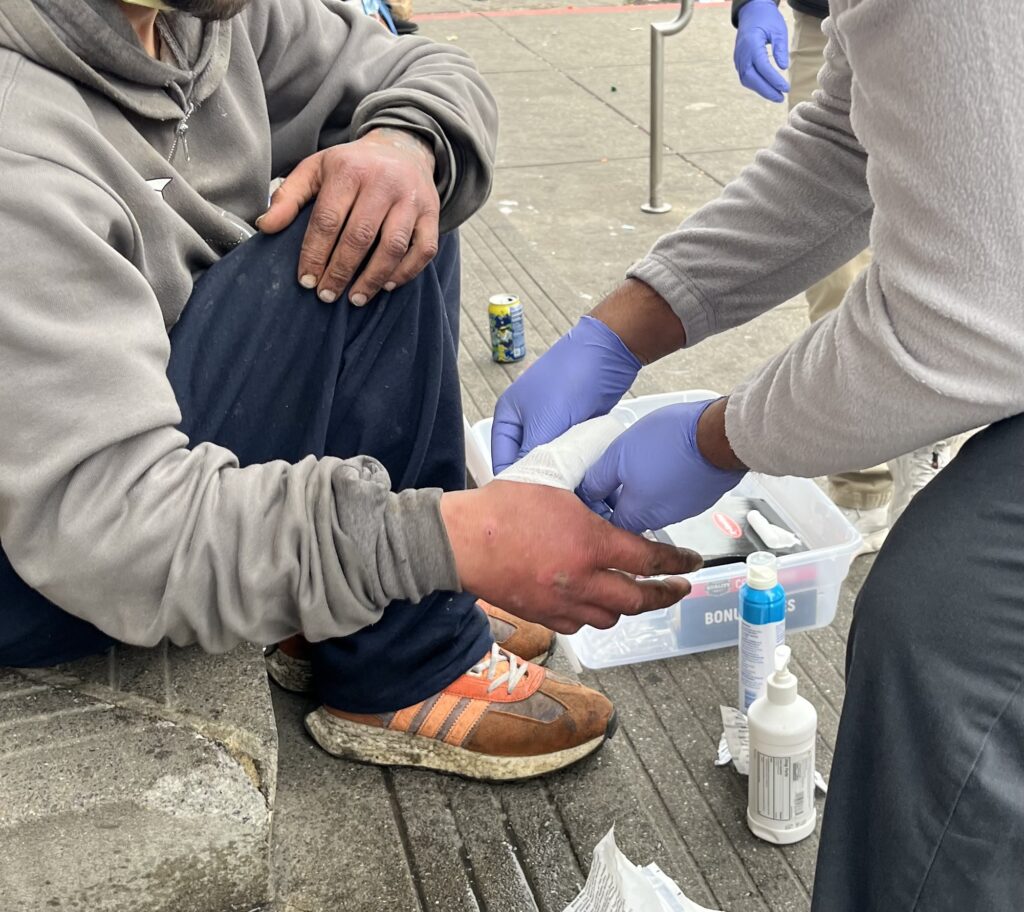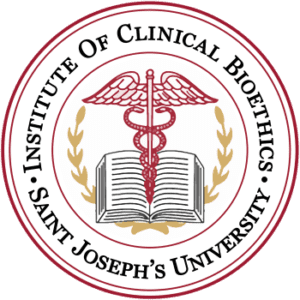Author: Aidan Fogarty
Aidan Fogarty is a Senior Fellow in the Institute of Clinical Bioethics and a member of the in-house wound care team at the Mother of Mercy House Health Promoters.
Of all the cities in the United States that are being ravaged by the opioid epidemic, Philadelphia seems to be one that has felt the epidemic’s effects most severely. The epicenter of this carnage is Kensington, in northeast Philadelphia, which has slowly transformed into a de facto open-air drug market. Drugs like fentanyl and heroin are routinely sold in broad daylight in the neighborhoods surrounding both Kensington and Allegheny Avenues, and the customers of this market, those suffering from substance use disorders, are often living on the street. The most recent addition, however, to the list of drugs that can be found in Kensington is xylazine, which is a non-opioid, veterinary tranquilizer that has no indicated medical uses in humans. Beyond the fact that xylazine is not an opioid, which means it cannot be reversed by an opioid agonist like naloxone, one of the most interesting clinical manifestations associated with xylazine use is the skin wounds that develop. In the past, cellulitis was more commonly associated with intravenous drug use, but the skin wounds associated with xylazine are more severe. These wounds, thought to be caused by xylazine decreasing perfusion into the skin, often occur on extremities and can be on, near, or far from the site of injection1. Moreover, wounds associated with xylazine use can often become necrotic and infected with a myriad of bacterial pathogens, which further complicates the treatment process and can lead to amputation or death.

One method that can minimize the harms associated with wound formation from xylazine use is wound care. Wound care involves the cleaning (avoiding the use of peroxide), debridement, and dressing of wounds with the appropriate bandages.2 This practice typically occurs in a place like Mother of Mercy House, which is an outreach program in Kensington, that offers wound care clinics (among many other things) on Thursday mornings free of charge. The benefits of free wound care services are multi dimensional. From a medical perspective, the presence of these xylazine wounds presents a number of risks including infection, sepsis, and even amputation. From a personal perspective, possessing wounds like these can bring embarrassment to the individual and damage their dignity. Basic wound care services provide a means to treat any medical harm associated with xylazine wounds in addition to protecting an individual’s dignity by providing them proper dressing and a chance to have them heal.
The Institute of Clinical Bioethics is currently developing a wound care program to be operated out of our Health Promoter at Mother of Mercy House in Kensington. The main goal of this project is to implement indoor and mobile wound care teams. When the first Health Promoter was held in Kensington, an impromptu mobile wound care team was formed and ventured out into the neighborhood to treat the wounds of those that could not make it to the clinic. This team consisted of volunteer medical residents, an EMT, members of the Mother of Mercy House staff, and a few Institute of Clinical Bioethics Fellows. The supplies used consisted of non-adhesive dressing, saline solution, and anti-bacterial wash, which was originally purchased for the on site wound care that was to take place at Mother of Mercy House. Since the first clinic in Kensington, we have since returned in February, seeing over 30 patients across both the indoor and mobile care teams. We now aim to expand upon the initial project and establish this as a paradigm for other programs to implement. Secondarily, the Institute is interested in obtaining data on the state of the wound crisis in Kensington. We are interested in the location of the wounds on the body, how long they have been present, if they have been treated before, if they are infected, and demographic data like age, gender, and ethnicity of the individuals.
These xylazine wounds are putting a number of individuals at risk of infection and amputation, but there are not many programs going out into the streets to treat their wounds. The Institute of Clinical Bioethics is looking forward to this undertaking and grateful to Mother of Mercy house for allowing us to deliver this necessary care.
- Malayala, S. V., Papudesi, B. N., Bobb, R., & Wimbush, A. (2022). Xylazine-Induced Skin Ulcers in a Person Who Injects Drugs in Philadelphia, Pennsylvania, USA. Cureus, 14(8), e28160. https://doi.org/10.7759/cureus.28160. ↩︎
- Zagorski, C. M., Hosey, R. A., Moraff, C., Ferguson, A., Figgatt, M., Aronowitz, S., Stahl, N. E., Hill, L. G., McElligott, Z., & Dasgupta, N. (2023). Reducing the harms of xylazine: clinical approaches, research deficits, and public health context. Harm reduction journal, 20(1), 141. https://doi.org/10.1186/s12954-023-00879-7. ↩︎

